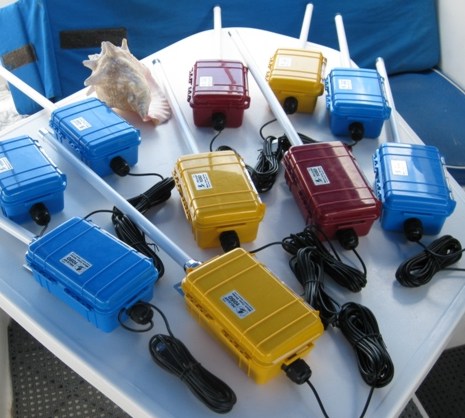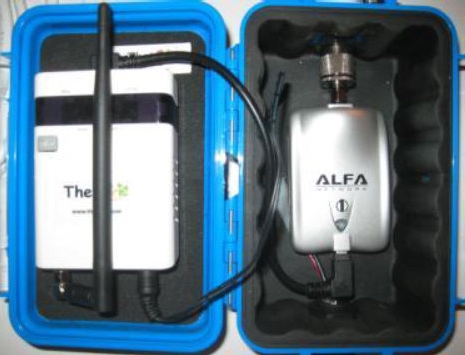The WirieAP, "Marine WiFi Perfected"?

The original Wirie -- seen above being assembled on a cruising boat in the Caribbean -- is a 1,000 mW USB WiFi transceiver which seems smartly set up for marine use and has many fans. But I've been one of those boaters who prefers an Ethernet-based alternative because it can be installed beyond USB cable length limitations, plus it can go right to a router and thus easily serve the Internet to multiple devices. (A particularly good Ethernet-based, high-power WiFi radio is the Ubiquity Bullet, which is available in many marine packages, as we discussed at length last Fall.) However, the new WirieAP model adds a local boat WiFi access point to that waterproof plastic case, which means that the install only requires a 12 volt feed to let every WiFi-enabled device on board share a well-amplified shore-side Internet connection...
The WirieAP costs $350, which is $100 more than the original, and there is a kit for adding the AP portion to the original, as seen in the upgrade manual photo below. The sailors who designed The Wiries haven't been shy about their use of that off-the-shelf Alfa WiFi radio -- which I think is this AWUS036H model, available for $32 on Amazon -- and some commenter may know whose AP radio they're using. And no doubt some folks will want to save money by trying to collect all the bits and pieces themselves, while others will be happier to buy a Wirie all set to go with the 8db marine antenna, the case (said to be more waterproof than a Bullet), the bracket, technical support, etc.
But does this all-in-one architecture constitute "Marine WiFi perfected" as claimed? I for one relish the idea of a single power cable enabling both a high power shore connection and an onboard access point. And so might my family and guests stepping aboard with their apps phones and pads. But there also might be a performance compromise involved when trying to find the best single install spot to both grab onshore WiFi signal and serve it around the boat. There might also be situations where a down-below WiFi router might have valuable gadgets plugged into its Ethernet ports besides a Bullet or similar, though a lot more wires than WirieAP. Your thoughts please.


 Share
Share
The first premise, that a bullet needs to be water-proofed is wrong.